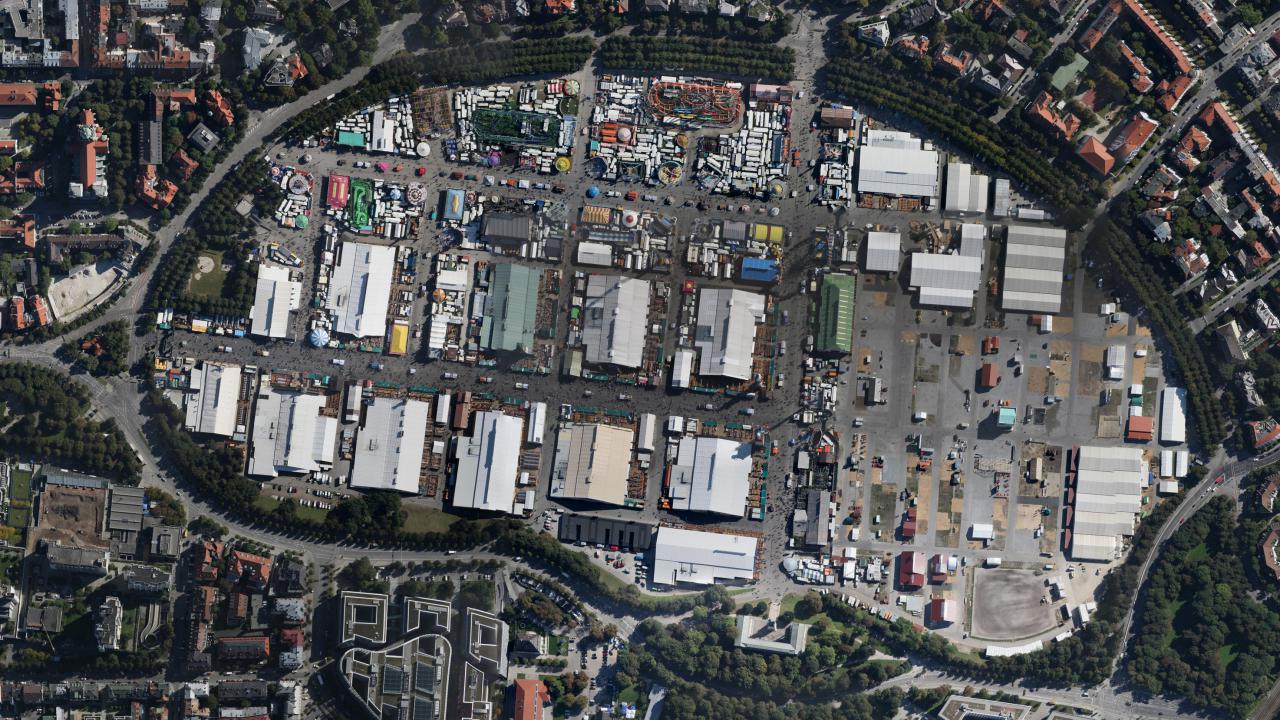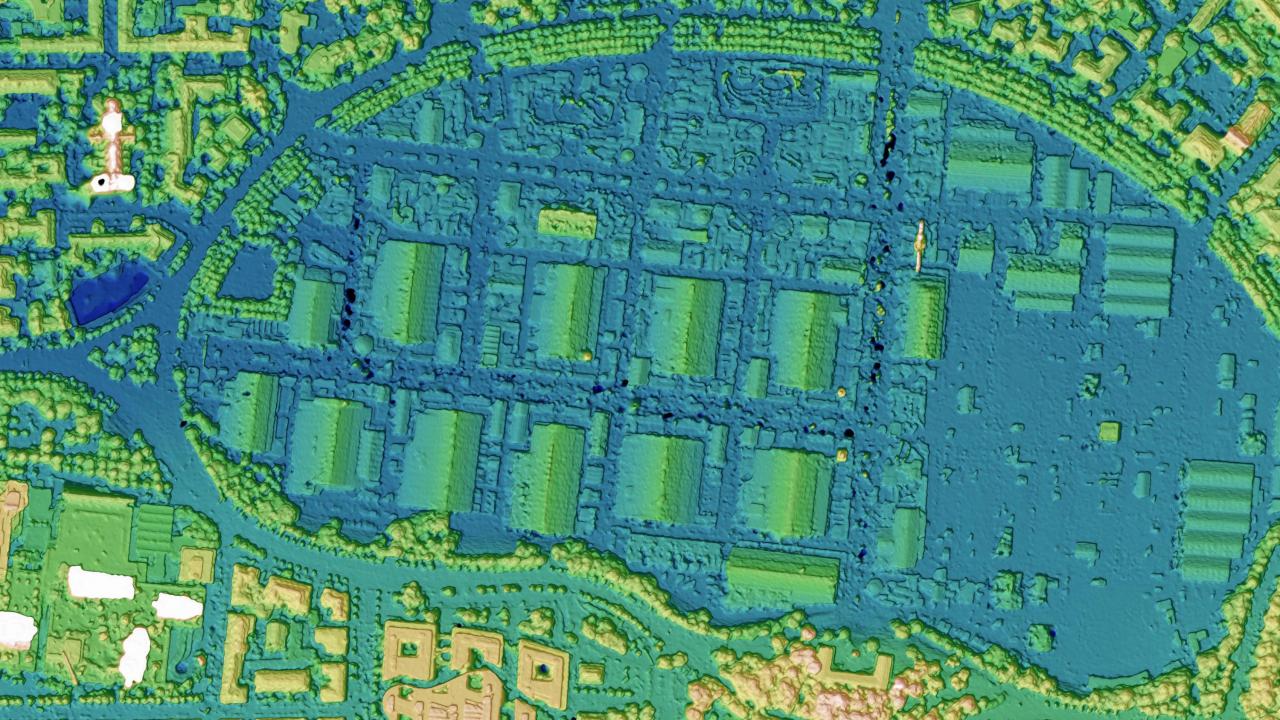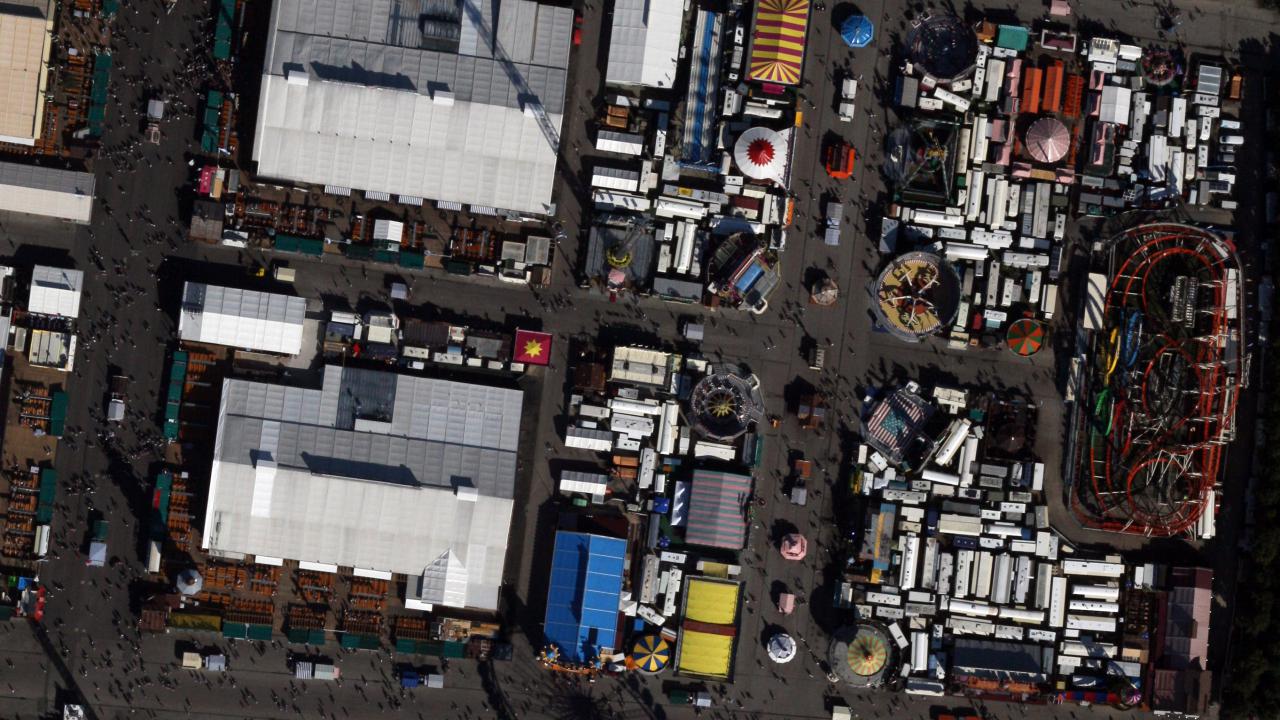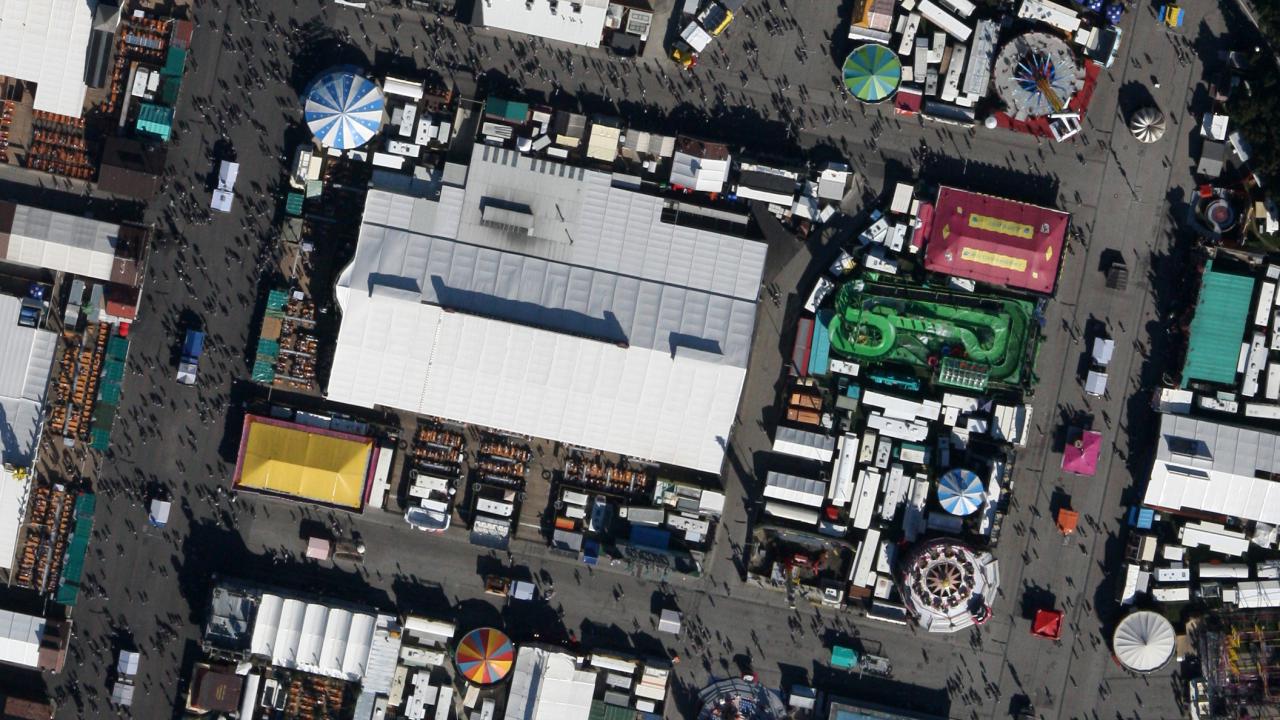Year after year the world’s largest festival throws Munich into an exceptional state. At such mass events, on-the-spot organisers, security staff and rescue teams rely on having quick access to situational information, also from the air. The German Aerospace Center (DLR) shows how this can be done using an airborne approach, flying over the Oktoberfest with DLR’s Dornier DO 228-212 research aircraft and photographing it with a DLR camera system. The massive amount of recorded image data was transmitted directly to the ground station in Oberpfaffenhofen with the help of a Free-Space Experimental Laser Terminal II (FELT II) optical system. The data obtained during the Wiesn overflight were used to successfully test the coordination between camera system and optical data link and are, in addition, a valuable research resource for analysing events involving large crowds.
Vabene++, a project being carried out in DLR’s Transportation Research Division, has for some time assisted public authorities and organisations with security responsibilities to deal with major mass events and disasters. Millions of visitors from Germany and abroad surge onto the grounds of the Theresienwiese to have a good time during the Oktoberfest, colloquially known as the Wiesn. For emergency personnel and first aid teams this poses new challenges every day, despite elaborate preparations, to effectively channel the stream of visitors and maintain the logistics framework for rescue efforts. Especially during periods with high numbers of visitors and long lines for the amusement rides and beer tents, the functioning of emergency lanes can, for example, be impeded. In such cases an aerial overview of the situation can help relief teams to assess the needs and, as necessary, divert the visitor streams. In order to provide decision makers with additional information, DLR is also investigating in the VABENE++ project methods and technologies for achieving situational awareness from the air and transmitting the relevant data to the ground.
On the last Wiesn Friday, DLR’s Dornier Do228 research aircraft took off from Oberpfaffenhofen for a flight over the Theresienwiese, equipped with a camera system and an innovative data transfer system. The camera system employed was developed at DLR’s Remote Sensing Technology Institute and consists of three cameras that take high resolution photos during the overflight. The cost is kept down by using off-the-shelf cameras, so public authorities will in the future be able to afford equipping their helicopter and aircraft fleets with these systems. With the help of highly precise positioning data images are processed already during the flight and early information, like the direction of crowd movement, is derived. In order to provide decision makers on the ground with the desired information as soon as possible, the images and information are transmitted to them directly. This is accomplished with a laser communication system, FELT II, developed at DLR’s Institute of Communication and Navigation and installed on the research aircraft. This system assures very high data rate laser transmission to the ground. By using optical communication the duration of data transfer can be minimized and the amount of data considerably increased. This means that the aerial images are available at the situation centre on the ground within seconds.
The data obtained in this way make it possible for scientists, emergency personnel and first aid teams to supervise evacuation and emergency paths, to identify large human flows and crowds, and to optimize access routes for rescue teams. But research not only focuses on streams of visitors. Large-scale events also put the entire traffic system at risk, which becomes critical especially in crisis situations. Scenarios are developed well in advance for mass events like the Oktoberfest so that rapid and efficient action is possible in emergencies. But there is not always time for advance planning. That makes it all the more important to develop systems that can be employed at short notice in emergency situations. This aspect is also undergoing research in the VABENE++ project.




